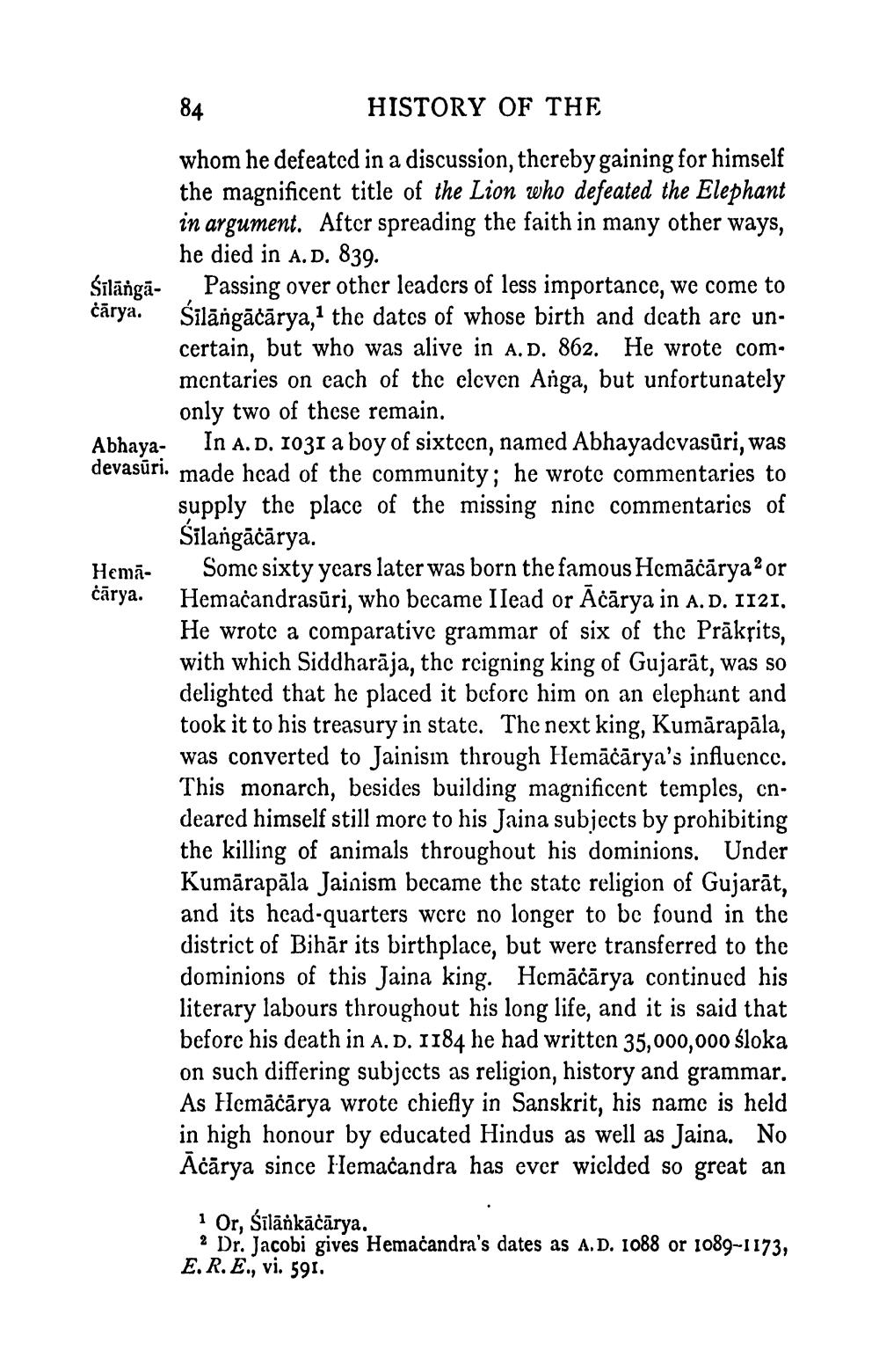________________
Sīlāngācārya.
84
HISTORY OF THE
whom he defeated in a discussion, thereby gaining for himself the magnificent title of the Lion who defeated the Elephant in argument. After spreading the faith in many other ways, he died in A. D. 839.
Passing over other leaders of less importance, we come to Silāngācārya,1 the dates of whose birth and death are uncertain, but who was alive in A. D. 862. He wrote commentaries on each of the eleven Anga, but unfortunately only two of these remain.
Abhaya- In A. D. 1031 a boy of sixteen, named Abhayadevasūri, was devasüri. made head of the community; he wrote commentaries to supply the place of the missing nine commentaries of Śilangācārya.
Hema- Some sixty years later was born the famous Hemācārya2 or cārya. Hemaċandrasuri, who became Ilead or Acārya in A. D. 1121. He wrote a comparative grammar of six of the Prakrits, with which Siddharaja, the reigning king of Gujarat, was so delighted that he placed it before him on an elephant and took it to his treasury in state. The next king, Kumārapāla, was converted to Jainism through Hemācārya's influence. This monarch, besides building magnificent temples, cndeared himself still more to his Jaina subjects by prohibiting the killing of animals throughout his dominions. Under Kumarapala Jainism became the state religion of Gujarāt, and its head-quarters were no longer to be found in the district of Bihär its birthplace, but were transferred to the dominions of this Jaina king. Hemācārya continued his literary labours throughout his long life, and it is said that before his death in A. D. 1184 he had written 35,000,000 śloka on such differing subjects as religion, history and grammar. As Hemācārya wrote chiefly in Sanskrit, his name is held in high honour by educated Hindus as well as Jaina. No Acarya since Hemaċandra has ever wielded so great an
1 Or, Sīlānkācārya.
2 Dr. Jacobi gives Hemaċandra's dates as A. D. 1088 or 1089-1173, E. R. E., vi. 591.




